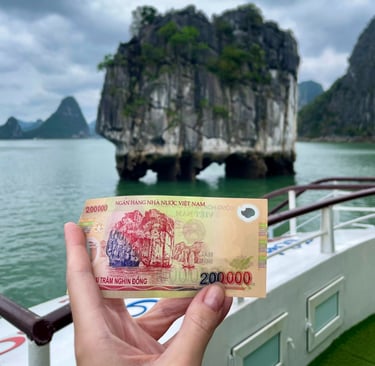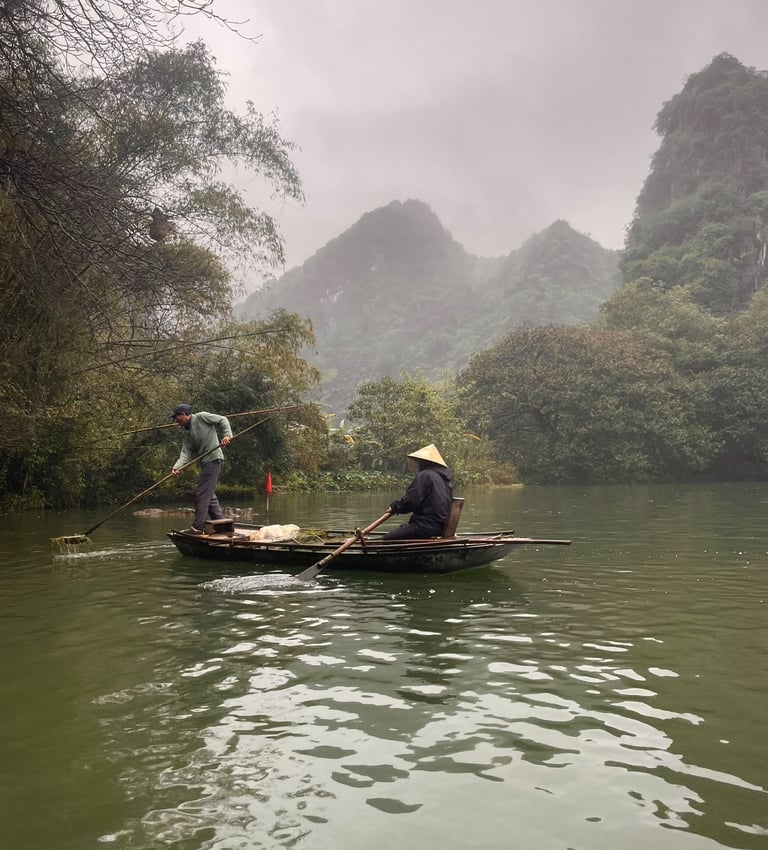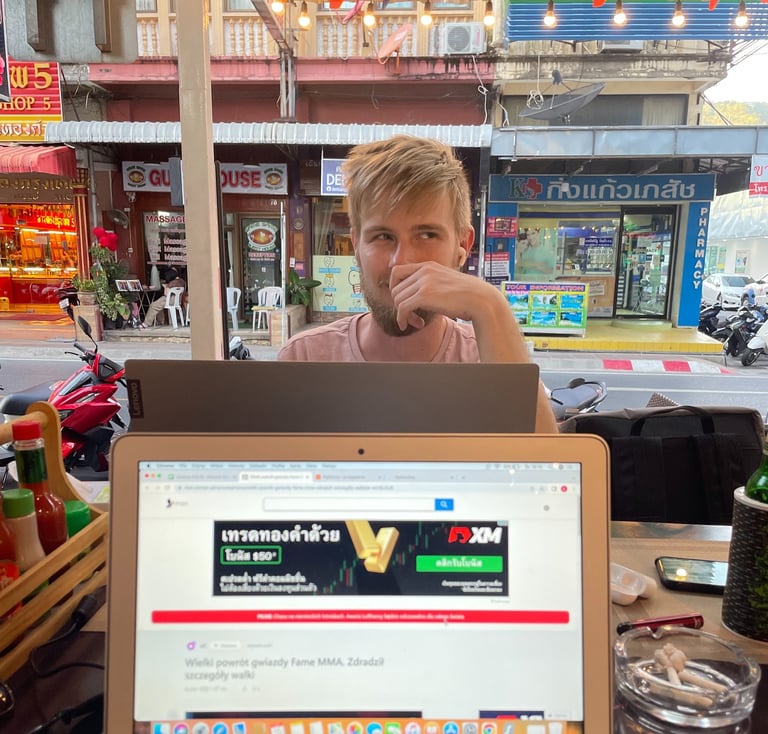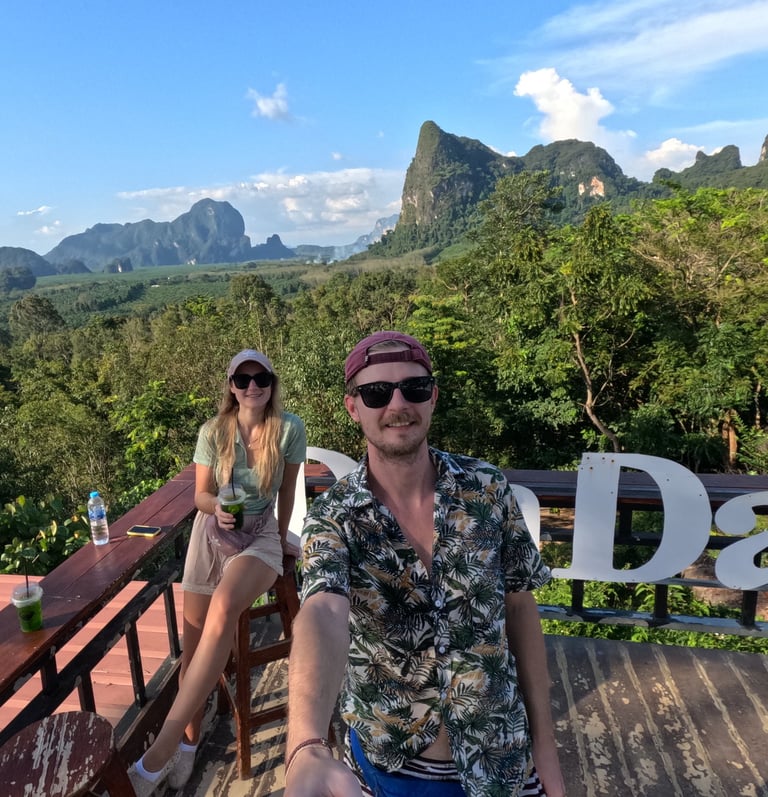
Najbardziej zróżnicowany kraj Azji Południowo-Wschodniej
V I E T N A M
What you should know before
traveling to Vietnam
Vietnam stretches for over 1600 km from north to south. Because of its narrow shape and length, it spans several climate zones - depending on who you ask, there are two, three, or even four. To make it simple, we’ll divide the country into three main climatic regions: the north, the central region, and the south.
Northern Vietnam - features a humid subtropical climate, which means there are four distinct seasons, similar to Europe. In the mountains, snow can even fall in winter. The coldest month is January, while July is the warmest - just like in Poland.
Central Vietnam - has a tropical climate with a clear dry and rainy season. The rainy period is relatively short and usually lasts from September to January (around Da Nang).
Southern Vietnam - is more tropical, with high temperatures throughout the year and a rainy season roughly from June to November.
So if you’re planning to explore the entire country in one trip, check the weather forecast carefully and pack accordingly. You might find yourself enjoying over 30°C in Saigon one day, and the next - shivering in Hanoi, where the temperature can drop to almost half that. In the photo: us in Sapa in March, and then… in Da Nang - just one day later.
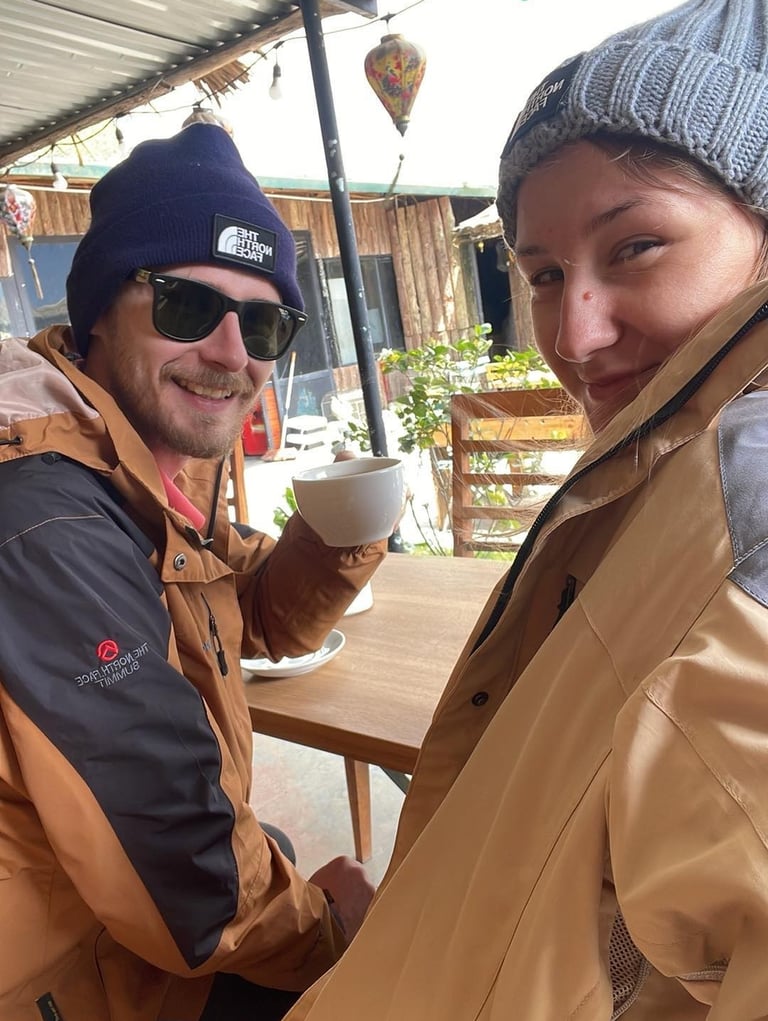

Vietnam - officially the Socialist Republic of Vietnam - is one of the most beautiful and diverse countries in Southeast Asia. Since our very first visit, it’s been competing head-to-head with Thailand for the top spot as our favorite country to travel through and to live in
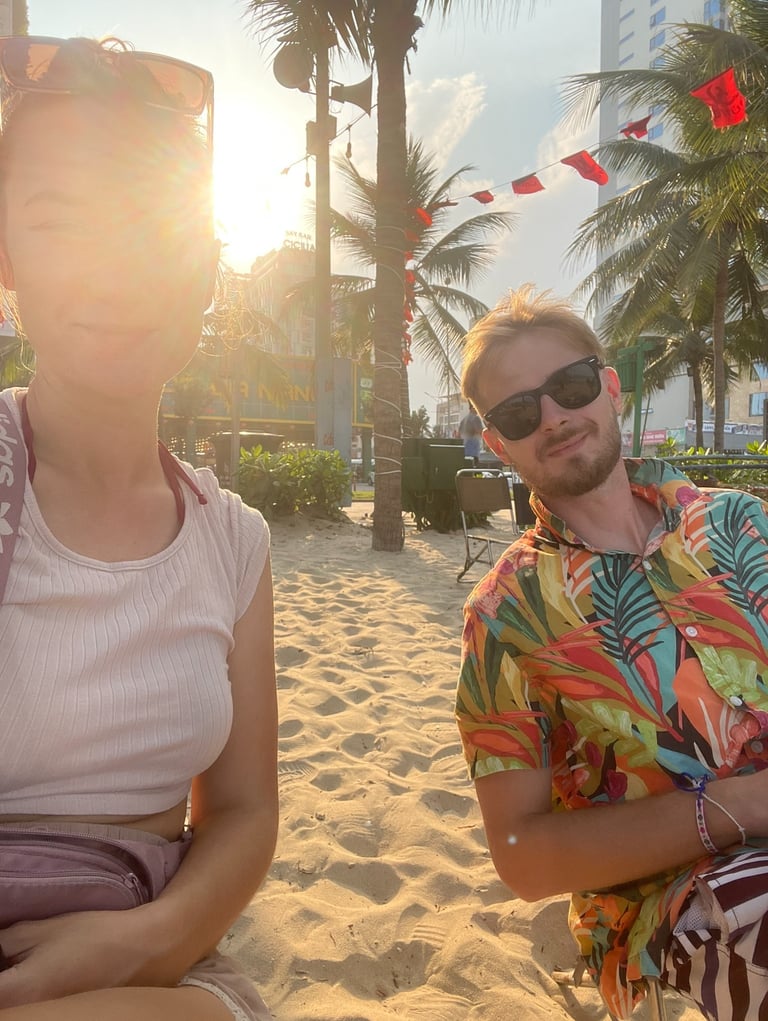


Wszystko co musisz wiedzieć o Wietnamie
Vietnam - officially the Socialist Republic of Vietnam - is a country in Southeast Asia, located on the eastern edge of the Indochinese Peninsula.
It borders China to the north, Laos to the west, and Cambodia to the west and south. To the east, it is surrounded by the South China Sea.
Vietnam covers an area of 331 212 km², which makes it slightly larger than Poland. However, the population is significantly higher - Vietnam has already surpassed 100 million people.
The country’s landscape is extremely diverse. Around 30% of its area is mountainous, while about 45% consists of plateaus. In the northwest, along the border with Laos and China, you’ll find high mountains, including Fansipan - the tallest peak in all of Indochina at 3 143 meters above sea level. Central Vietnam is home to the lower Annamite Mountains, characterized by steep slopes, plateaus, lowlands, and river valleys such as the Han and Thu Bon. The southern part of the country is dominated by the vast Mekong Delta, one of Vietnam’s most important agricultural regions, famous for its rice production. Vietnam also boasts an exceptionally long coastline - about 3 260 kilometers, stretching from the Gulf of Tonkin in the north to the Gulf of Thailand in the south.
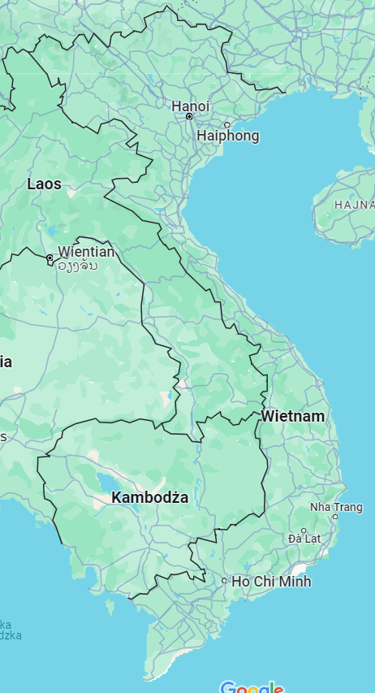

WHERE IS VIETNAM LOCATED
WEATHER – WHEN TO VISIT VIETNAM


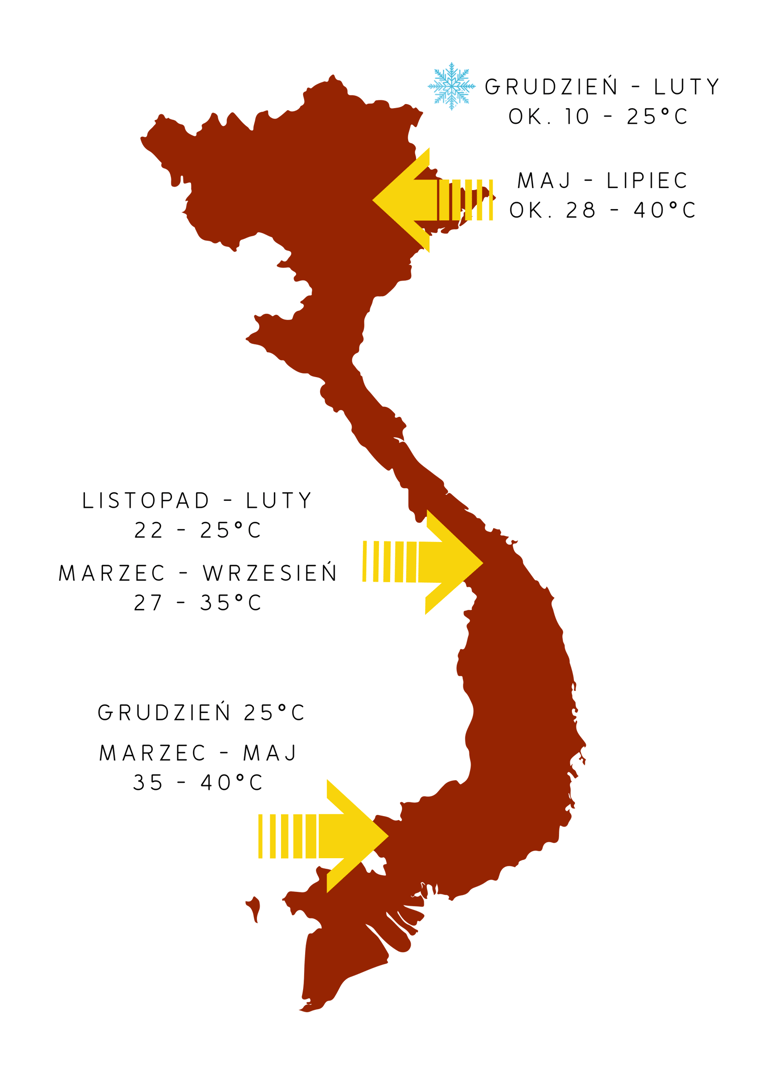

To put it simply, Vietnam has two main seasons: the dry season (November–April in the north and south, March–August in central Vietnam) and the rainy season (May–October in the north and south, September–February in the central part).
As I mentioned earlier, Vietnam is such a long and geographically diverse country that there’s never one single weather pattern for the whole nation. In the same month, you can be basking in the sun on the southern beaches while shivering in the northern mountains.
THE NORTH – (Hanoi, Sa Pa, Ninh Binh, Ha Long Bay)
This region has the most variable weather and even four distinct seasons, much like in Europe. There’s a warm but humid spring (February–April), a hot and rainy summer (May–August), a cool and breezy autumn (September–November), and a cool, dry winter (December–January).
Summer temperatures can reach over 38°C, while in winter they can drop as low as 8°C. In the mountains, it can even fall below zero, and snow sometimes appears. The warmest month is July, and the coldest is January.
When to go north? The best months are spring and autumn.
THE CENTRAL REGION - (Hue, Da Nang, Hoi An, Nha Trang, Da Lat)
Central Vietnam is quite large, and the climate varies depending on how far north or south you go - the closer to the north, the more similar the weather gets to northern conditions, and the closer to the south, well, you get the idea. Generally, there are two main seasons here: dry and rainy. The dry season lasts quite long - roughly from mid-January to August. September and October are, on paper, the worst months to visit due to potential storms and typhoons. The rainy season starts around September and gradually weakens through to January.
When to go to central Vietnam? Pretty much any time of the year except autumn. The best weather is from March to May.
THE SOUTH - (Phu Quoc, Ho Chi Minh City, Mekong Delta)
Southern Vietnam has the most typical tropical monsoon climate, with high temperatures all year round. There are two seasons: the dry one (November–April) and the rainy one (May–October). Temperatures range from 25°C to 35°C throughout the year, leaning more toward the upper end. December is the coolest month.
When to go south? The best months are from December to February. Avoid June to September if possible, as typhoons and flooding can occur during that period.
When we first traveled to Vietnam, it was around April and May - which, in our opinion, is the best time if you want to explore the entire country in one trip. In Hanoi, it was about 21–25°C (light jacket weather, or just a T-shirt if you get warm easily). In Ha Long Bay, the temperatures were perfect for short sleeves; Da Nang and Hoi An offered ideal beach weather, while Saigon was, as always - hot, humid, and with a few occasional showers.
Our weather experiences
Our second time was on Phu Quoc Island between June and July. It rained most of the day, though there were a few sunny breaks that allowed for some beach time. Still, the weather was incredibly unpredictable - one minute, clear blue skies, and the next, it looked like a scene from a disaster movie. Even hiding under a roof didn’t help much - the rain came down so hard that it bounced off everything, soaking us completely, even while sitting under a shelter. We stayed there for a month, so it didn’t bother us that much, but if it had been just a two-week vacation, we would’ve been really frustrated. Definitely something to keep in mind when planning your trip.
Our third trip was between March and April. We arrived from Thailand and immediately felt the chill - around 20°C in Hanoi (and 17°C in the evenings), with that annoying light drizzle and plenty of fog. The longer we stayed, the sunnier it became. In SaPa, it was freezing most of the time - temperatures ranged between 14–17°C - but we were prepared. We bought warm hats and some very “authentic” North Face jackets. Every evening we took hot baths to warm up the room with steam - a little trick that worked surprisingly well! In Ninh Binh, we got completely soaked, while in Da Nang, as always - the weather was simply perfect.





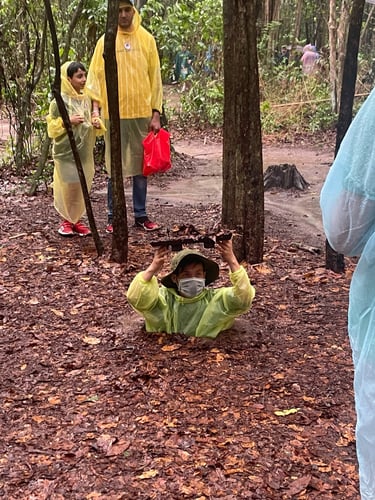

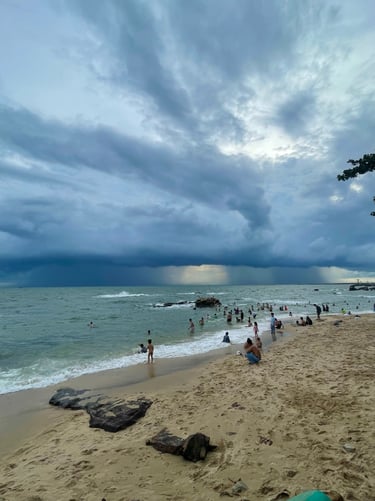
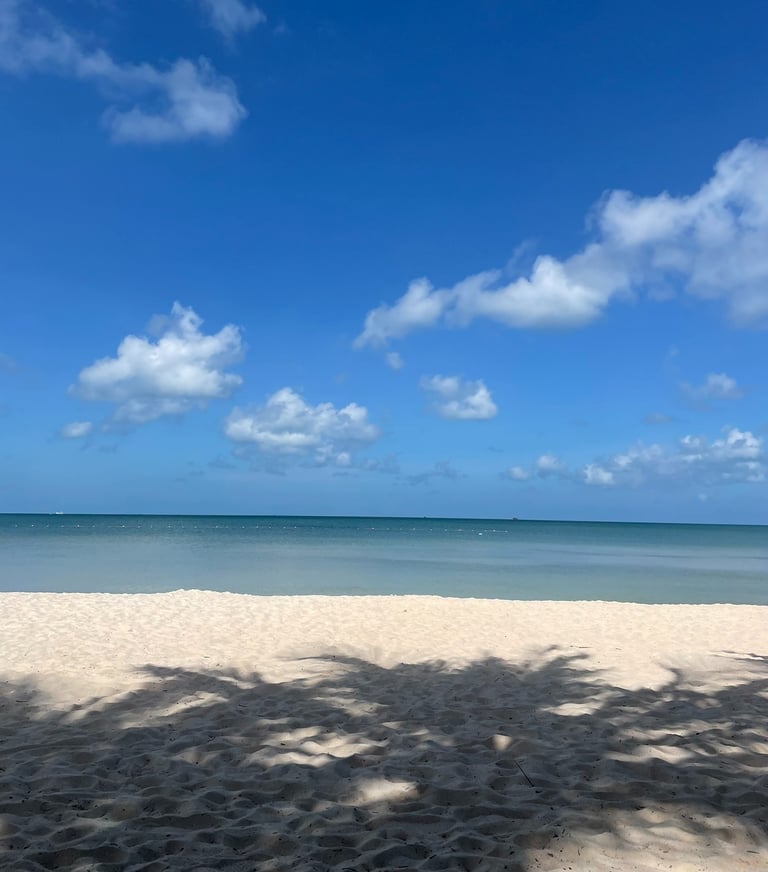


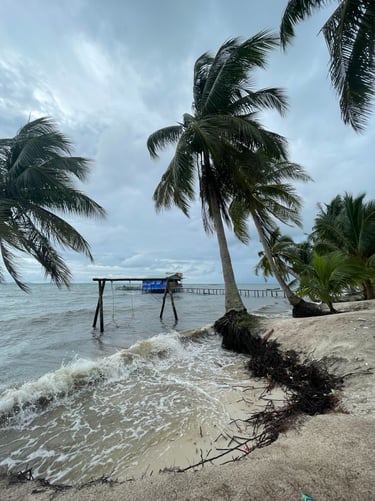
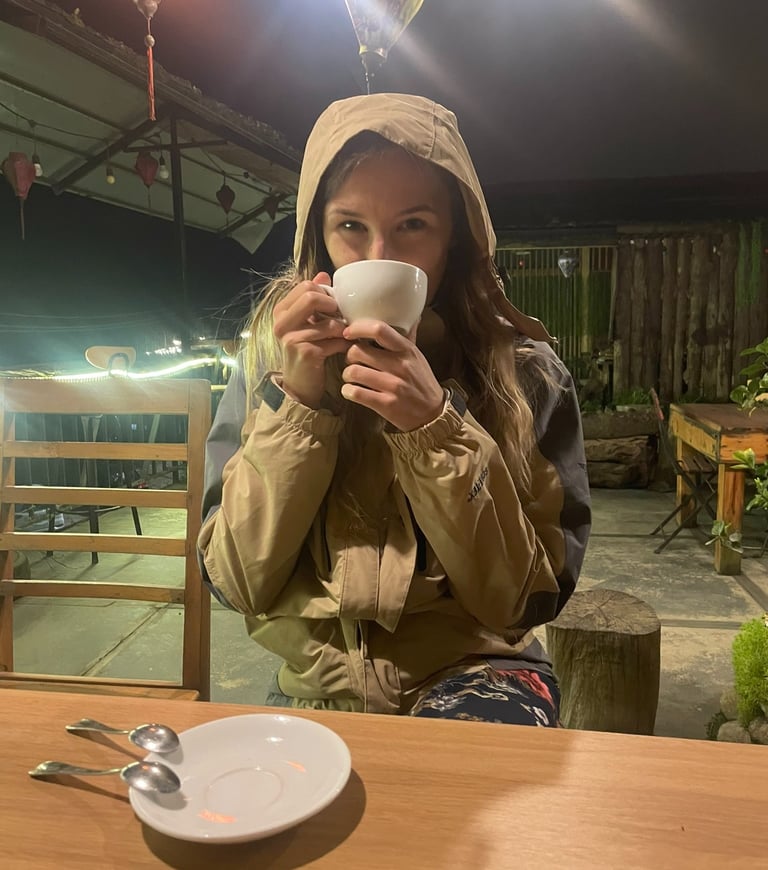


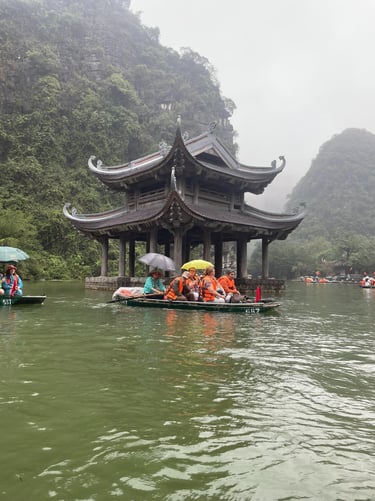

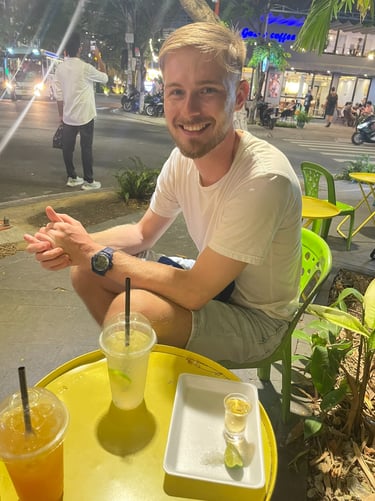
Our fourth and fifth stays in Vietnam were much longer - six months in Central Vietnam from June to November 2024 - and it was a wonderful time. In June and July, it was very hot and sunny almost every day. August and September were pleasantly warm, with the first rains arriving in October. We did experience a few downpours, strong winds, a light brush with a northern typhoon, and even a small earthquake. By late October, a typhoon reached us too. The sea surged, temperatures dropped to jacket weather, and Da Nang and Hoi An had minor street flooding. Still, temperatures stayed pleasant - around 26–28°C, with a cool breeze that felt amazing after the summer heat. During the typhoon, though, the forecast changed dramatically - 20°C and heavy rain.
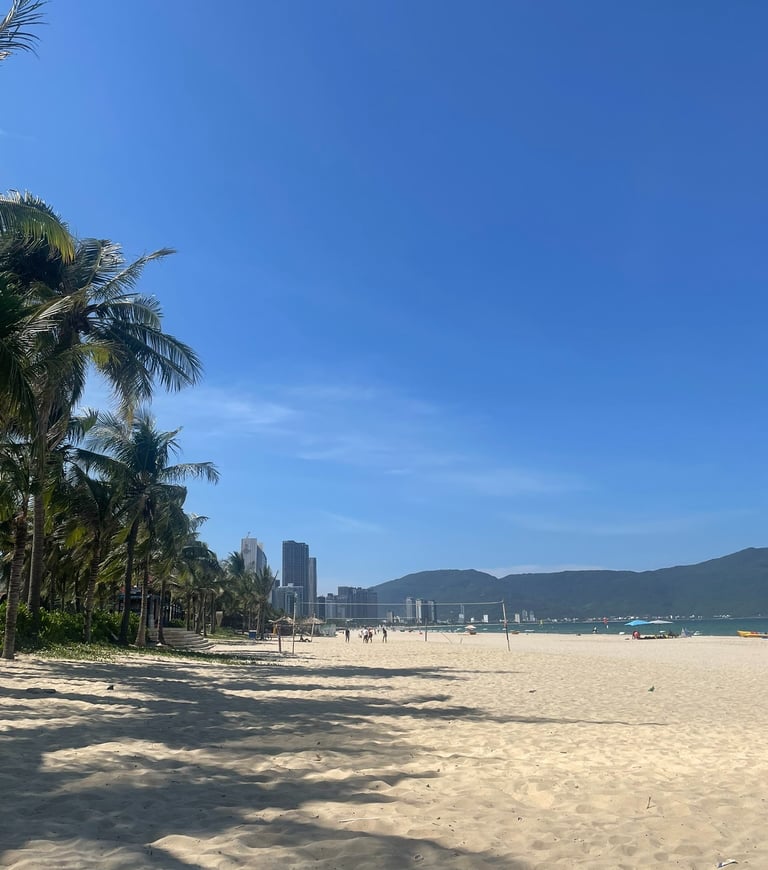


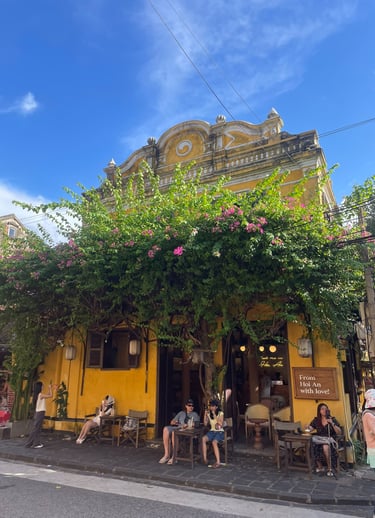
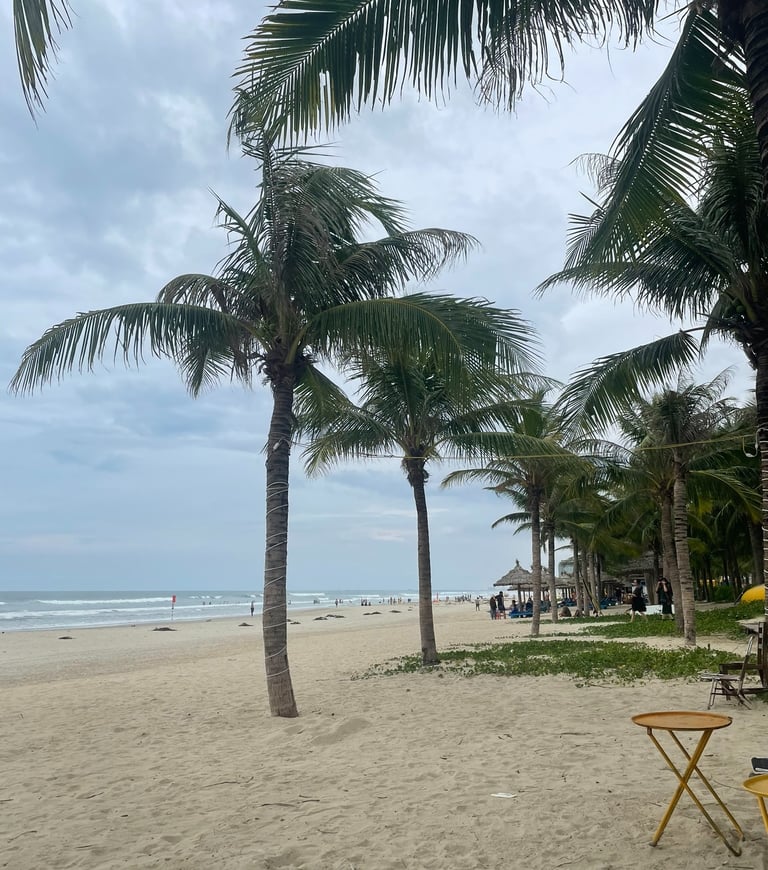

A BLOODY HISTORY OF VIETNAM
Vietnam is a country with a turbulent and complex past. One of the most defining influences on its development was Chinese rule, which began in the 2nd century BCE and lasted for more than a thousand years. The Chinese occupation profoundly shaped Vietnamese culture, administration, and legal systems - introducing civil service exams, Confucian values, and the development of irrigation-based agriculture. Despite centuries of foreign domination, the Vietnamese people never abandoned their fight for independence, and local uprisings were common. In 938 CE, following victory at the Battle of Bạch Đằng River, Vietnam finally regained independence from China.
The following centuries saw the rise of powerful dynasties that shaped the nation’s cultural and political identity.
The Lý Dynasty (1009–1225) brought stability, the consolidation of state structures, and the spread of Buddhism.
The Trần Dynasty (1225–1400) oversaw military and cultural growth, famously repelling Mongol invasions in the 13th century.
The Lê Dynasty (1428–1788) marked Vietnam’s “Golden Age,” known for advancements in law, education, arts, and literature.
European Influence and Colonization
By the 17th century, Vietnam had become divided among rival clans - the Trịnh in the north and the Nguyễn in the south - whose conflicts weakened the country, paving the way for European powers to intervene. With the arrival of Catholic missionaries came increasing French involvement, and by the mid-19th century, France began a full-scale colonization effort. The invasion of 1858 led to the creation of French Indochina in 1887, encompassing Vietnam, Laos, and Cambodia.French rule continued until World War II, when Japan occupied the region, weakening French control. After Japan’s defeat in 1945, Hồ Chí Minh and his Việt Minh movement - an anti-colonial coalition - declared the Democratic Republic of Vietnam in Hanoi.
The First Indochina War (1946–1954)
A year later, France tried to reclaim its colonies, sparking the First Indochina War - a brutal conflict that culminated in the decisive Battle of Điện Biên Phủ in 1954. France’s defeat led to the Geneva Accords, which temporarily divided the country: the communist north under Hồ Chí Minh and the anti-communist south supported by France.
The Vietnam War (1955–1975)
The division of Vietnam only deepened tensions. Between 1955 and 1975, the country became the stage for one of the 20th century’s most devastating wars. The Vietnam War, also known as the Second Indochina War, pitted communist North Vietnam (backed by the USSR and China) against the South (supported by the United States).
Political and religious tensions escalated into violent conflict. In 1963, the self-immolation of a Buddhist monk during protests against religious discrimination shocked the world. The Gulf of Tonkin Incident in 1964 - when a U.S. destroyer was allegedly attacked by North Vietnamese torpedo boats - triggered full-scale American military involvement.
By the late 1960s, over half a million U.S. soldiers were stationed in Vietnam. The war was marked by relentless bombing campaigns (like Operation Rolling Thunder) and intense jungle warfare. The conflict inflicted enormous civilian casualties and widespread destruction.
In 1973, the Paris Peace Accords were signed, and U.S. troops withdrew. Two years later, in 1975, Northern forces captured Saigon, marking the end of the war and the reunification of Vietnam under communist rule.
The war left behind deep scars - millions of deaths, long-term ecological devastation from chemical defoliants like Agent Orange, and profound social trauma both in Vietnam and abroad. In the U.S., it sparked anti-war protests, political crises, and a re-evaluation of foreign policy.
The Vietnamese–Cambodian War
The last major conflict involving Vietnam was the war against the Khmer Rouge regime in Cambodia. It lasted from the late 1970s to the early 1990s, although the main phase of fighting ended in 1979. The roots of this war lay in the deeply antagonistic historical relationship between the two nations and in the political chaos that swept through Indochina after the U.S. withdrawal from Vietnam. When the Khmer Rouge, led by Pol Pot, seized power in Cambodia in 1975, the country descended into a brutal dictatorship. The regime sought to create a utopian, communist agrarian society, which resulted in mass purges, forced relocations, and genocide - the consequences of which are still visible in Cambodia today. Distrustful of Vietnam, which had adopted a socialist model after reunification in 1976, the Khmer Rouge began launching cross-border attacks on Vietnamese villages. These raids, often extremely violent, resulted in the massacre of many civilians. In response, in December 1978, Vietnam decided to invade Cambodia, aiming to overthrow the Khmer Rouge regime. In January 1979, after a short but intense military campaign, Vietnamese forces succeeded in toppling the Khmer Rouge and capturing Phnom Penh, the Cambodian capital. Heng Samrin was installed as the head of a new, pro-Vietnamese government. Although the war officially ended in 1979, the conflict and regional instability persisted into the early 1990s. The Khmer Rouge continued guerrilla warfare from jungle bases, maintaining influence until the 1991 Paris Peace Agreements and the establishment of the United Nations Transitional Authority in Cambodia (UNTAC). Vietnam’s military presence in Cambodia also sparked significant international tensions, especially with China, which supported the Khmer Rouge both politically and militarily. This war contributed to Vietnam’s diplomatic isolation throughout the 1980s. The Vietnamese–Cambodian War remains one of the bloodiest conflicts in the region’s modern history.
Reunification and the Đổi Mới Reforms (from 1976 onward)
After decades of war, rebuilding the country was far from easy. Vietnam faced international isolation and severe economic difficulties. In 1986, the Communist Party launched an economic reform program known as Đổi Mới (“Renovation”). The reforms aimed to transition the centrally planned economy toward a market-oriented one, while maintaining the socialist political framework and opening the country to global trade and foreign investment. The government implemented agricultural reforms allowing farmers to lease land long-term, privatized certain state-owned enterprises, and introduced market-based pricing systems for most goods. Infrastructure development became a key focus - improving living conditions, supporting industrial and tourism growth, and attracting foreign capital.
Modern Vietnam
Today, Vietnam is rapidly transforming from an agriculture-based economy into an increasingly industrialized and globalized nation. Cities such as Hanoi and Ho Chi Minh City are evolving into modern urban centers with well-developed infrastructure, education, and culture. Despite its remarkable economic progress, Vietnam continues to face major challenges - including social inequality, environmental degradation, and corruption. The country still has a long way to go, but year after year, living standards are improving, access to education is expanding, and society as a whole is becoming more prosperous. Economic growth in the cities draws young people from all over the country seeking better educational and professional opportunities. Many young Vietnamese now speak fluent English and attend universities. However, it’s important to remember that much of Vietnam’s population still lives in rural areas, where agriculture remains the main source of income. Life in the countryside is slower and deeply rooted in tradition, which holds great importance in Vietnamese culture. Many families cultivate rice, vegetables, and fruits in small, family-run farms. Rural communities tend to be close-knit, with a strong sense of cooperation and interdependence - though in some areas, illiteracy among adults remains an issue.
If you’d like to learn more about modern Vietnam, I recommend watching the insightful documentary by Good Times Bad Times.
Vietnam is a socialist one-party republic, where the Communist Party of Vietnam (CPV) holds a dominant role. The country has a unicameral parliament – the National Assembly. The President, elected by the parliament for a five-year term, serves as the head of state. The executive power rests with the government, led by the Prime Minister.
POLITICAL SYSTEM
RELIGION
Talking about religion in Vietnam is just as complex as talking about its history... so let’s dive in.
Vietnamese beliefs form a fascinating blend of multiple religions and philosophical-ethical systems. Most people here don’t strictly follow one faith - instead, they practice a mix of traditions, a result of cultural syncretism. Syncretism means blending elements from different religions or traditions into a new system of beliefs - something that often happens when different cultures meet through migration, conquest, or trad
Buddhism
Buddhism is the most widespread religion in Vietnam, especially among the ethnic Kinh majority, practiced by around 15% of the population. Pagodas are common throughout the country, serving not only as religious centers but also as places for reflection and community life.
Catholicism
Catholicism arrived in Vietnam with European missionaries in the 16th century and is now the second-largest religion. Despite occasional challenges due to government restrictions, Vietnam has one of the largest Catholic communities in Southeast Asia. You’ll find churches in nearly every city - and sometimes even small chapels attached to family homes.
Confucianism and Taoism
These two philosophical traditions have deeply shaped Vietnamese culture, ethics, and social structure. Confucianism emphasizes respect, hierarchy, education, and family duty - values that still define much of Vietnamese society. Taoism adds a more mystical and spiritual dimension, focusing on harmony with nature and balance in life. Their influence can be felt not just in temples, but also in everyday manners and attitudes toward elders, authority, and education.
Cao Đài
A truly Vietnamese creation, Cao Đài emerged in the 1920s as a syncretic faith combining Buddhism, Christianity, Taoism, Islam, and local folk beliefs. Its temples are often colorful and ornate, symbolizing unity among all religions. Followers of Cao Đài - about 2.5% of the population, mostly in southern Vietnam - believe in universal harmony and moral improvement.
Hòa Hảo
Founded in southern Vietnam in the early 20th century, Hòa Hảo is a simplified form of Buddhism focused on practical spirituality - compassion, hard work, honesty, and good deeds in daily life. Worship is usually conducted at home, reflecting the religion’s values of simplicity and personal devotion. It’s especially common in the Mekong Delta region and followed by about 1.5% of Vietnamese.
Animism and folk beliefs
Traditional animist and ancestral practices remain strong, especially in rural areas and among ethnic minorities. Many families maintain home altars to honor ancestors, believing their spirits continue to influence the well-being of the living. Offerings of food, incense, and flowers are common - particularly during festivals or important life events.
No religious affiliation
Although the Vietnamese constitution guarantees freedom of religion, in practice the government closely monitors religious organizations. Because of this - and due to a long period of communist influence promoting atheism and secularism - a large portion of Vietnamese people today identify as non-religious, even if they still observe traditional rituals at home.
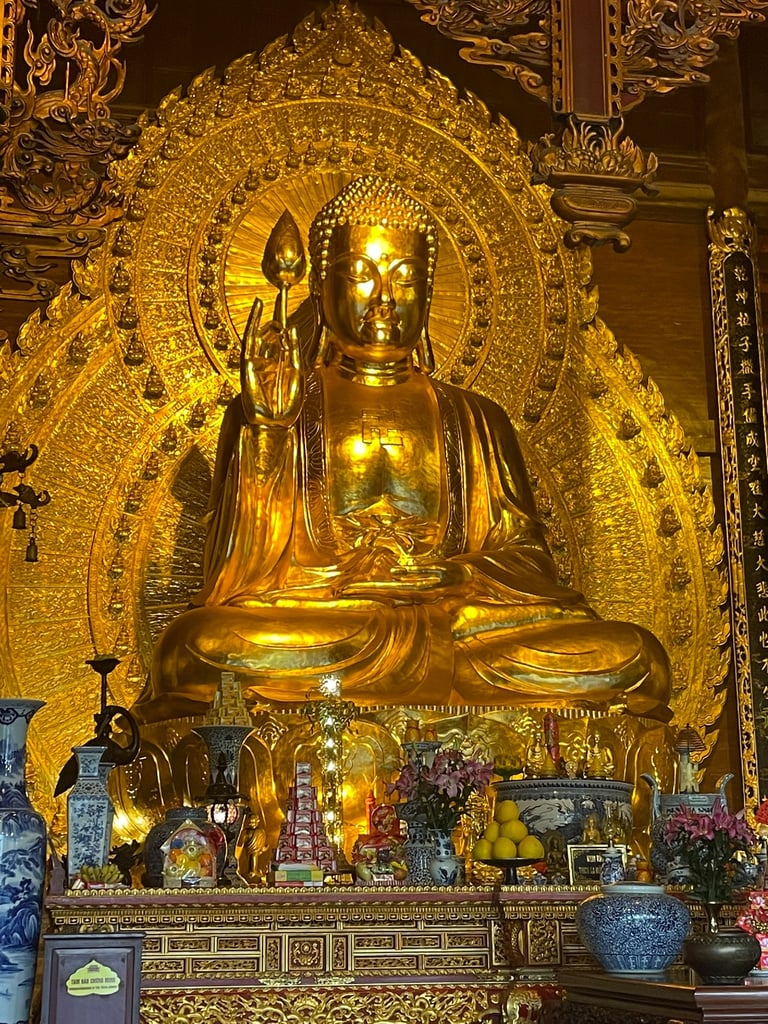

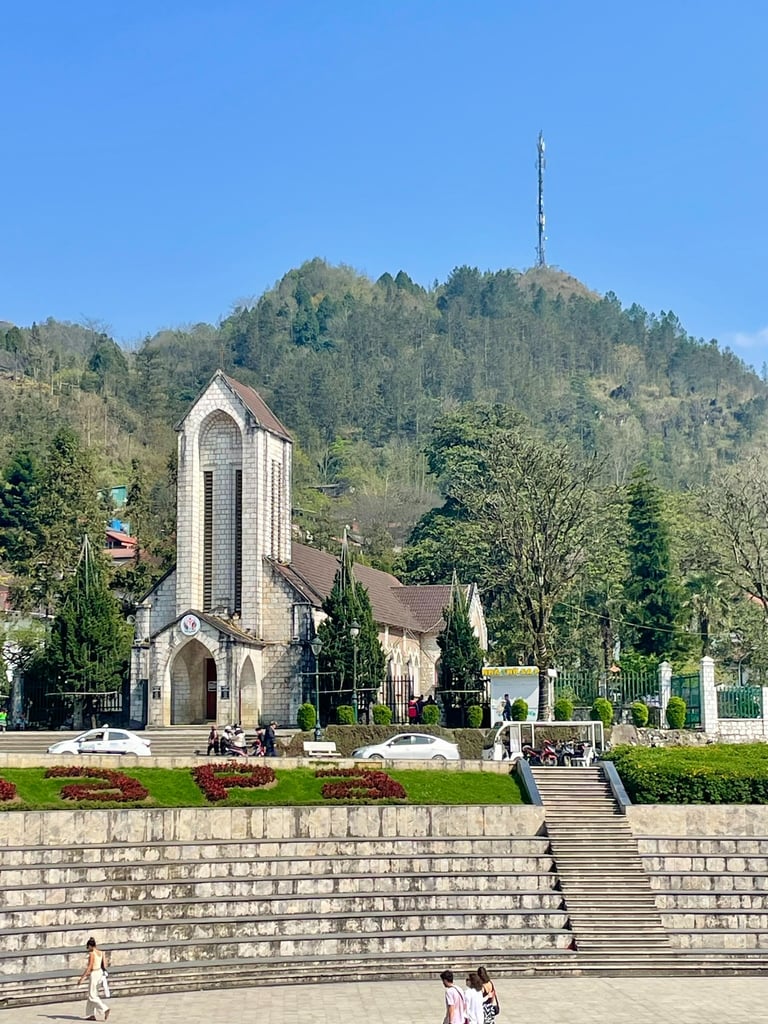


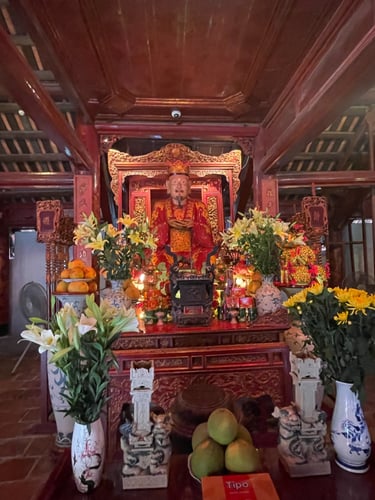
LANGUAGE
The official language of Vietnam is Vietnamese (tiếng Việt), which belongs to the Austroasiatic language family. Unlike Thai or Khmer, Vietnamese uses a Latin-based alphabet, introduced by missionaries centuries ago. It’s a tonal language, meaning the tone of a word can completely change its meaning - a real challenge for learners!
Here are a few basic phrases to help you get started:
Xin chào (sin chow) - Hello
Tạm biệt (tam byet) - Goodbye
Cảm ơn (gam un) - Thank You
Tôi không hiểu (toy khom hee-u) - I don’t understand
Vâng (vang) - Yes
Không (khom) - No
Tôi tên là... (toy ten la...) - My name is...
BONUS! Tra means tea in Vietnamese - and if you’re a tea lover, you’ll find it everywhere, from street vendors to cozy cafes 😉
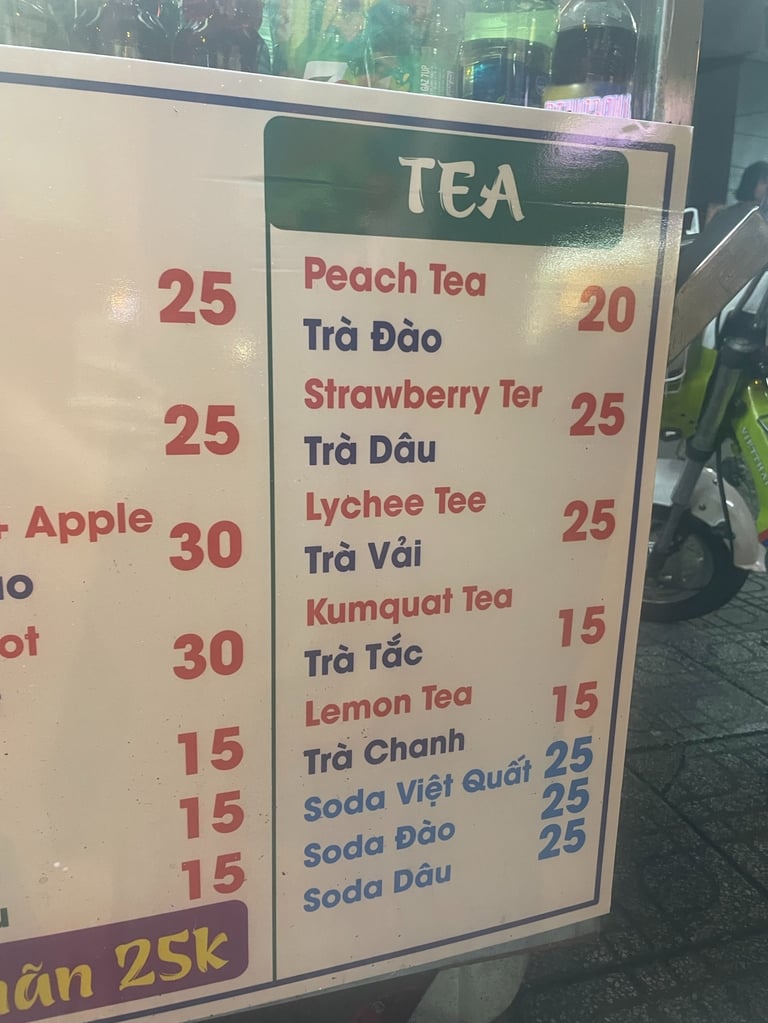

CURRENCY
SIM CARD & INTERNET
WIZA DO WIETNAMU
I kept putting off writing about Vietnam… it’s one of those countries that’s really hard to describe. Yet it’s absolutely fascinating - just like its history and incredible diversity, both geographical and cultural. I warmly invite you to visit our Instagram, where you can see highlights from our previous trips to this country - and many others 😉
If you find our content helpful, you can say thanks with a small coffee - or simply share it on your social media.
We’d also love it if you followed us on Instagram and Facebook. We do our best to share the most up-to-date stories and insights - not just from Thailand, but from other countries we visit too.
And if you need help planning your own trip to Vietnam, just drop us a message - we’ll be happy to help! 😊
If you’re looking for organized tours in Vietnam, feel free to check out our GetYourGuide link.
By booking through it, you’ll be supporting our future travels - at no extra cost to you.
Need help planning your vacation?
Heading to Vietnam? Need someone to plan your holiday, or just a few tips and a chat? We’re here for you.
Drop as a line
Do you have questions about traveling to Asia? Suggestions for the blog? Want to collaborate? Need help or just want to meet for coffee?
Feel free to get in touch.


